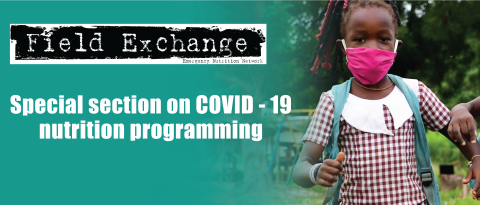Nutrition data use and needs: Findings from an online survey of global nutrition stakeholders
Research Snapshot1
Information on population-level nutritional status and nutritional determinants are typically collected through periodic national and sub-national surveys. However, there is growing global demand for improved country-level nutritional data. To justify investment for improved data collection, evidence of the demand for information is needed. To fill this gap, the authors conducted an online survey of nutrition professionals working in low- and middle- income countries to identify the nutrition indicators and data sources widely used and the current unmet nutrition information needs.
The online survey was disseminated through professional networks and online nutrition-focused listservs. Respondents were asked their professional background, how they use data in their work, which nutrition indicators and data sources they had accessed in the previous year and unmet data needs. The survey was completed by 235 respondents, the majority of whom were from non-governmental organisations and research entities. Few government officials responded to the survey.
Of those who accessed country-specific data in the last year, Demographic and Health Surveys (DHS) were the most common (74%) followed by Multiple-Indicator Cluster Surveys (MICS). Most respondents had accessed at least one source of consolidated data in the last 12 months (75%) of which the most common was the Global Nutrition Report (GNR). Routine facility data sources such as the Health Management Information System (HMIS) were less accessed compared to household surveys.
Respondents with a multi-country focus were more likely to have accessed both the DHS and the GNR in the last year (85% and 82% respectively) compared to those with a single-country focus (60% and 66% respectively) (P < 0.001; P = 0.014 respectively). The most commonly accessed indicators overall were the prevalence of exclusive breastfeeding (69%), child minimum dietary diversity (66%), stunting (65%) and wasting (65%).
Identified gaps in data include diet quality indicators, nutrition-sensitive intervention coverage and infant and young child feeding promotion coverage. Data challenges noted by the respondents were the lack of geographical disaggregation of data (82%), the lack of data for demographic groups (77%) or data being out of date (77%). Results point to the continued need for timely, high-quality nutrition data and greater investment in surveys.
1Buckland, A J, Thorne-Lyman, A L, Aung, T, King, S E, Manorat, R, Becker, L, Piwoz, E, Rawat, R and Heidkamp, R (2020). Nutrition data use and needs: Findings from an online survey of global nutrition stakeholders. Journal of global health, 10(2), 020403. https://doi.org/10.7189/jogh.10.020403


